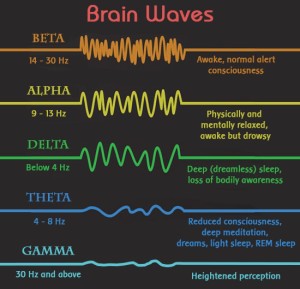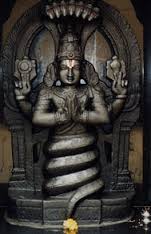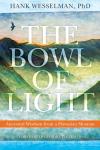Every morning (unless you are a night-owl), you awaken to a new day and a new set of possibilities to unfold. As we look more deeply into the nature of reality, we begin to see that not just every day, but every breath offers the same opportunity to give birth to something new. In our work with pranayama over the previous few blog posts, we have discovered that breathing, when relaxed, arises from, and dissolves back into Stillness. Thus breathing is a major factor in our ability to ‘realize’ that the limitless mystery that is Stillness (or Silence, Buddha Nature, Purusha, Atman, etc) is the source of all that arises moment to moment. We are developing a proficiency in staying grounded in Stillness. Keep it going!
But what are the factors that shape what arises? How can we overcome habituated responses to life that drain our energy? How can our own unique creativity participate in the moment to moment unfolding? Lets look at some of the layers available to our investigation.
- The Cosmic Fields: 13.7 billion or so years ago, the manifest universe emerged into being guided by what we may call the laws of physics. Energy, particles, atoms, stars and galaxies burst into being and variations of these continue to be self emerging and self sustaining. The sun, moon, planets and stars continually move around, but we can guarantee they will be here moment to moment.
- Our Geological Fields: Mother Earth emerged into being some 4.5 billion or so years ago and continues to re-birth herself moment to moment through her movements, weather patterns, geological upheavals and water flow. If you have chosen to be here, Mother Earth will appear moment to moment in your reality.
- Our Biosphere: The 8.7 million living species currently on the planet re-birth themselves moment to moment. Individual members die off and new ones emerge, species die off and new ones emerge, in an extraordinary dance. Where ever you go, the biosphere will be with you moment to moment, including you own living body which includes 30 trillion cells that have your DNA, and 300 trillion more bacterial cells which have their own DNA. Moment to moment there is a lot going on!
- The Noosphere: A term coined by Teilhard de Chardin, noospere refers to the energetic fields generated by human thought and carried through culture in various forms. Science and religion are just two of the more obvious aspects, but educational, judicial, political, and artistic and many other social systems are also included. Every moment we awaken to the collective field the humans give birth to through their thought driven behavior.
- Our own inner world: You wake up and your ideas, beliefs, memories, habits and patterns of emotional energy, likes, dislikes, plans and schemes are all there re-emerging, or lying latent for the right input to activate them. Habits are a two edged sword, as they can liberate the intelligence to look into more complex processes, but they can also keep you unconscious. This is the level where we can choose to give birth to something new, if we are awake, paying attention, and resting in the Stillness. The Upanishads offer some insight on some of the structures and possibilities available to us to help in our transformation.
A yogi’s model of reality, from the Taittiriya Upanishad:
We are are composed of 3 bodies, further divided into five nested sheaths or layers known as koshas. These extend inward from gross to subtle. All emerge from the Luminous Emptiness of Stillness. What is false dissolves into emptiness, (shunyata). what is real, the ground of all that arises, remains as light or luminosity.
The Gross Body (Sthula Sharira) has one sheath:
the Anamaya kosha: the body of food. We have weight and mass, as does all the matter in the universe. We study anatomy to make sense of how our structures interact. The known universe has a gross body we all share. Realizing that the whole universe is my body is an awakening that can arise in any and every moment. Feel this! Nurture this!
The Subtle Body (Sukshma Sharira) has three sheaths:
Pranamaya Kosha: the body of energy: we are also energetic beings, bubbling over with electrical, thermal and kinetic energies that are gifts from the dynamic energies of sun, moon, stars and galaxies. We embody this individually in our physiology, or the 5 pranas. Live well, stay healthy, give birth to health moment to moment.
Manomaya Kosha: the body of mental activity, including perception, memory and learned behavior patterns, and our personality structures. The universe is also imbued with perception and memory. Healthy use of this realm greatly eases our lives and deepens our capacity to dive into the unseen psychic/shamanic realms. Unhealthy use locks us into inflexible beliefs and patterns of behavior that perpetuate suffering through the generations through the Attachment process and other social and cultural fields. Healing comes from awakening the next level and integrating:
Vijnanamaya Kosha: the body of intelligence, also known as Buddhi. We can discern and discriminate. We can imagine. We can choose to change our actions, if we stay present, patient and alert. These conscious changes come from Stillness. But habits can carry on unconsciously and imagination can lock onto pathology. The intelligence is greatly nurtured when in can be integrated with the next level:
The Causal Body or Karana Sharira, has one sheath, the Anandamaya Kosha, the body of ecstasy or bliss. Here is Divine Revelation as the intelligence finally dissolves into wholeness and every atom and molecule, every form and pattern sings and dances in a Cosmic symphony that is ecstatic. We miss this because we are distracted by the confusion and delusion generated in the other layers when they are less than conscious.
As the anandamaya kosha awakens, the cosmic fields of the anamaya and pranamaya koshas are felt by the enhanced perception of the manomaya kosha. The vijnanamaya kosha can then recognize confused ideas, beliefs and patterns as seed forms in the manomaya kosha and, through imagination creativity and surrender into the cosmic fields, transform their energies into further spiritual growth and participation in the cosmic unfolding. All five levels function together as they arise and dissolve moment to moment.
The Practice: Sama Vrtti Pranyama
Remember, pranayama can be done as a kriya or cleansing, healing physiology, calming nerves, transforming the soft tissue structures of diaphragm, inter-costals, organs and spinal canal. Or, we can use it as meditation, to deepen our ability to stay in luminous emptiness. Sama Vritti is a meditative pranayama, as we are not specifically looking to expand the chest or stretch the diaphragm, having done that previously in asana and other pranayamas. We are looking to bring a deep sense of balance which can reveal the mystery of luminous emptiness.
In a comfortable sitting pose, or a supported reclining pose, spend several minutes settling in and observing the flow of the breath. Notice that the inhalation and exhalation probably do not have the same qualities of length, quantity and ease. They might, but… Be curious and attentive.
In sama vritti part 1, we will look to balance out the length of time of the inhalation and exhalation. You can count, like in music, or just feel it through. If you inhale to a four count, allow the exhalation to also have a four count. Back off on the easier phase, rather than trying to push to more challenged one. If your inhalations are generally easier and longer than the exhalation, let the inhalation be shorter to help balance. Same if the exhalation is easier. Let the pauses be soft and natural. You can spend years just on this level.
Part 2. We add a pause after inhalation, antara kumbhaka. In ‘Light on Pranayama” Iyengar suggests you start with a shorter retention, so the ratio of inbreath – retention – outbreath would be 1 – 1/4 – 1. With more experience (and much more space and elasticity in the chest), you can move to 1 – 1/2 – 1, 1 – 3/4 – 1, and finally 1 – 1 – 1.
Iyengar also suggests, and I agree wholeheartedly, that if you are not experienced in the retentions, only add them to sama vrtti part 1 every 4th or 5th breath. This is true for all levels of pranayama practice. When adding something new, allow several normal breaths to come between each pranayama breath. That will minimize strain and allow you to see how the relaxtion can deepen when this is natural and not forced. There is always some level of awkwardness when learning something new, but your intelligence can monitor the overall feeling and keep you on track.
Part 4: add the retention after exhalation. Start with smaller pauses until a relaxed ease is felt in the transition. Gradually work toward a 1 – 1 – 1 – 1 rhythm. The inhalations and exhalations will be naturally shorter to accommodate the longer retentions. You will begin to feel the that the antara kumbhaka is just continuation of the in-breath, without the gross breath moving, and the bahya kumbhaka is a continuation of the exhalation, with the further letting go internal.
Part 5: after any and all practice, savasana. Digest and rest in the luminous emptiness, drashtuh svarupe, avastahnam. Be born again, with your original face, radiant and free.











